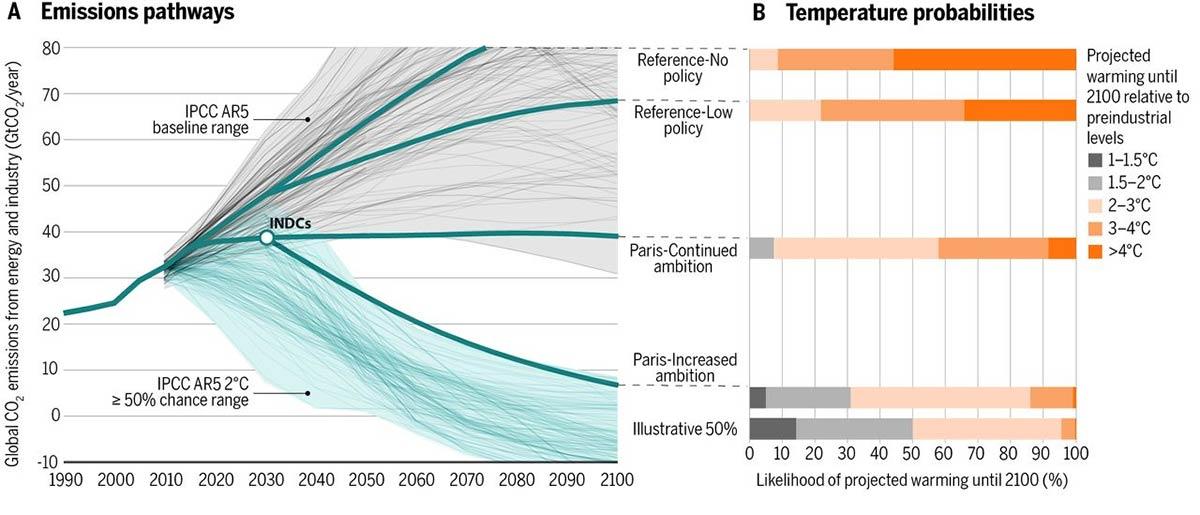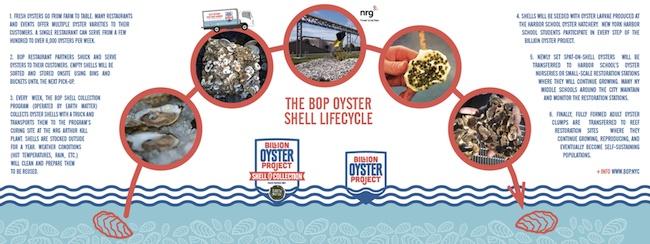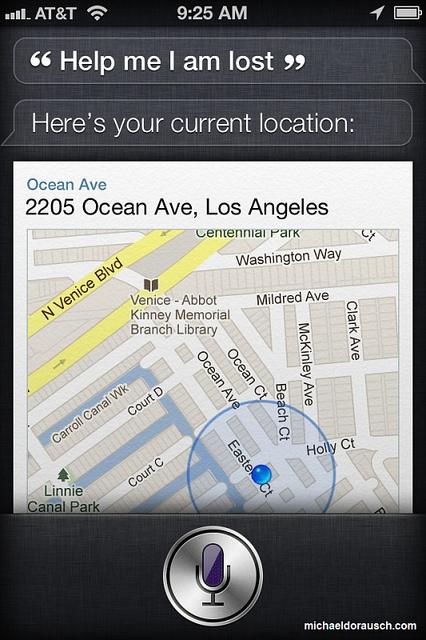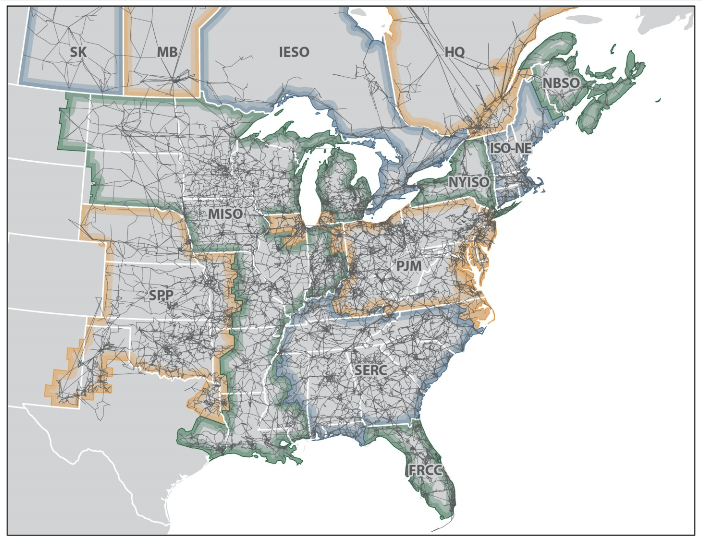Together We Can Rethink Reuse


By Ken Alterman, President and CEO of Savers
Did you know it can take up to 700 gallons of water to make a single new cotton T-shirt? It’s why Savers challenged people everywhere this back-to-school season to save millions of gallons of water with one simple act: making their next new tee a thrifted one.
It was only natural for our company to advocate for reducing the collective environmental footprint of clothing. We are built on the power of reuse and continually strive to sell reused clothing that serves both shoppers and the planet.
Last month alone, we helped offset the use of hundreds of millions of gallons of water from people buying thrifted tees instead of new ones. Through this single act, people from across the United States and Canada showed they truly Give A Sh!rt about the planet.
By asking people to Give a Sh!rt about their clothing footprint, we are asking them to engage in the reuse cycle, taking us one step closer to offsetting water consumption and conserving finite natural resources.
While this success is a step in the right direction, clothing and textile waste is still a huge problem that is often overlooked. We all know about recycling paper, plastic and soda cans – some of us take it for granted.
Too few people know that their clothing has an environmental footprint and that it can be reused and recycled. The fashion industry is quickly becoming the second most polluting industry in the world. People are not only producing, but also consuming more clothing than ever. In fact, North Americans now consume 80 billion pieces of clothing every year – four times more than in 1980. And too often clothing is being carelessly thrown into landfills (26 billion pounds), when these items could have been reused or recycled (95 percent!).
As we as consumers begin to realize the impact our clothing waste has on the planet, it is encouraging to see likeminded individuals and companies embrace what Savers has been doing for more than six decades. We were excited to have YouTube blogger iJustine partner with us on National Thrift Shop Day by cleaning out her closet and donating her unneeded clothing to a local nonprofit. She alone diverted over six trash bags of clothing from potentially heading to a landfill.
Additionally, this past spring, Evrnu and Levi Strauss created the first pair of jeans from post-consumer garment waste using a new recycling technology. The garment was created from five discarded cotton T-shirts and used 98 percent less water than virgin cotton products.
And now there are companies like Looptworks that are upcycling and creating products from excess material that otherwise would have ended up in landfills. Repurposing these materials allows Looptworks to create high-quality goods and conserve resources.
What’s great about more people and organizations participating in the reuse cycle is that, collectively, we are helping to reduce the environmental footprint of clothing. Did you know there are several ways to rethink reuse?
Here’s what you can do to join our I Give a Sh!rt movement and take care with your clothing footprint:
- Make your next tee a thrifted one, and the one after that.
- Help us continue the #igiveashirt movement to offset water consumption and conserve finite natural resources by engaging in the reuse cycle.
- Donate your unwanted goods to a local nonprofit. Whenever you’re cleaning out your closet or getting organized donating is a great way to get rid of unwanted items. Not only are you helping nonprofits in your community, donating ensures the lives of items you no longer need are extended through the circular economy.
- Choose high-quality, sustainably sourced goods when possible.
Together we can Give A Sh!rt to make a better world for future generations, because this is their planet too.
Images courtesy of Savers
Ken Alterman is the President and CEO of Savers.
U.S. and China Ratify Paris Agreement: A Tipping Point?


Late Friday night, China and the U.S. formally joined the Paris Agreement. This momentous announcement tips the balance toward a quick entry into force of the Agreement by the end of 2016 — if not by the end of September.
The Paris Agreement requires 55 percent of the 180 signatories to ratify or formally join, representing more than 55 percent of global emissions. The UNFCCC ratification status tracker, last updated as of Friday afternoon, counted 26 parties accounting for 39 percent of emissions.
China and the U.S. together are responsible for over 38 percent of global emissions. Their commitment pushed the emissions from signatories to 75 percent, well over the 55 percent threshold. Securing the missing 27 country signatures will be not a problem now that the U.S. and China have confirmed their commitment. The next wave of ratification is expected later this month, as countries gather in New York City for the annual General Assembly of the United Nations on Sept. 19.
The Paris Agreement announcement came late at night, on the eve of a long holiday weekend in the U.S., indicating that the Obama administration was eager to avoid media attention and not turn this decision into a presidential campaign talking point. The administration has consistently argued that the Paris Agreement was not a treaty since it did not impose any legally-binding constraint to the U.S. This interpretation ruffled feathers in Europe at the time the document was negotiated in late 2015, but enabled the administration to proceed with formally ‘joining’ the agreement with a signature from the president, without having to submit the document to ratification of the Senate.
Senate ratification (or lack thereof) was the kiss of death for the Kyoto Protocol, and U.S. climate negotiators were intent to avoid involving the Republican-controlled Senate, which would undoubtedly oppose ratification. This accelerated procedure does, however, make the future of the Paris Agreement fully dependent upon the next U.S. president, since that same signature can be undone just as easily.
Hillary Clinton has committed to pursue current efforts from the White House to reduce greenhouse gas emissions and build resilience, while Donald Trump has made contradictory statements about climate science and announced he would pull out of the Paris Agreement if elected. Given current polls and forecasts for the November 2016 elections, we expect the U.S. will stand by its commitment to the Paris Agreement for the next four years. But it's too soon to tell.
Will it be enough?
The quick entry into force of the Paris Agreement is critical for many reasons. First, reducing emissions aggressively and early-on is the most effective way to prevent catastrophic impacts from climate change. Many scientists consider the commitments under the Paris Agreement to be insufficient to stop climate change. These commitments, known as intended nationally determined contributions (INDCs or NDCs), are due to be updated every five years, which leaves the door open to more aggressive emission reductions in the future.
A joint study from the University of Maryland and the Pacific Northwest National Lab showed that the current emissions-reduction commitments, denoted “Paris – Continued Ambition” on the chart below, carry only a 50 percent chance of keeping global warming under 2 degrees Celsius.
Countries would have to increase their policy ambitions and reduce emissions much more drastically to have a shot at keeping global warming in the 1.5- to 2-degree range. The 2-degree threshold is considered by a majority of climate scientists as the upper limit for global warming to avoid severe and irreversible consequences.
The other reason for which a quick entry into force of the Paris Agreement could be a game-changer is the amount of adaptation finance it could help unlock. The Agreement sets a goal of mobilizing $100 billion a year between 2020 and 2025 in climate finance, both for mitigation and adaptation. This money is much needed to engage in ambitious adaptation projects in developing countries, where the impacts of climate change are expected to be most harmful.
Toward Marrakech
Climate policy remains high on the agenda for global leaders — from the Paris Agreement to the G20 statement this weekend, which "reaffirmed" the G20 countries’ commitment to address climate change through emissions-reduction policies and climate finance.
The announcement from the U.S. and China paves the way for growing momentum ahead of the next Conference of the Parties (COP22) in Marrakech, Morrocco, with a renewed focus on implementation and concrete actions.
Image credits: 1) whitehouse.gov; 2) UNFCCC (accessed September 6, 2016); 3) UMD and PNNL joint study, Dec 2015.
Two Years Later: Did Obamacare Really Expand Healthcare Access?


We are two years into the greatest national healthcare experiment in American history. The catalyst is a piece of legislation on which nearly everyone has an opinion: the Affordable Care Act (ACA), popularly known -- either affectionately or disdainfully -- as Obamacare.
Meant to expand access to health insurance nationwide, particularly for low-income Americans, proponents say it is succeeding. Though it is still too soon to declare the bill a success, data shows noticeable improvements in both healthcare access and perceived quality.
This is most clearly reflected in one of the key initiatives of the ACA, its expansion of Medicaid, an existing health insurance program meant to cover low-income Americans. But the bill, and a recent Supreme Court Decision, left the choice whether to expand Medicaid up to the states. While dozens of states took advantage of free federal money, several choose not to, mostly for partisan reasons.
ACA expanded access, but not for everyone
Dr. Benjamin Sommers, a physician and assistant professor of health policy and economics at Harvard University, worked with a team of researchers to examine healthcare access and self-reported health among low-income residents. They assessed two states that chose to expand Medicaid, Kentucky and Arkansas, and one that did not, Texas.
The team found marked differences in the states that increased access through Medicaid expansion.
“We saw these big gains in the first two years of the program in terms of people's ability to afford medical care, the likelihood that they have a primary care doctor, [and] their ability to find care in an office,” Sommers told TriplePundit. “In states ... that chose not to expand Medicaid under the ACA, most low-incomes adults still don't have a way of affording health insurance or getting most of the medical care they need.”
Sommers' findings mirror what others noticed in government data. States that expanded Medicaid, are, generally, seeing the number of people without health insurance going down, and quality of care going up. In states that did not choose to expand, there are some worrying trends.
That reflects a key challenge that is being faced across the country. The ACA broadly increased access to health insurance, but the ability to access affordable care in your own neighborhood isn’t a given for every American, particularly if you live in a state like Texas that is openly hostile to the ACA and limits the ability of residents to participate.
That is not to say that other initiatives aren't making a difference. One program that aims to bring simpler access to Americans are MinuteClinics, which were launched by CVS Health in 2000, and now count more than 1,100 locations in 33 states and the District of Columbia. MinuteClinics have provided care through more than 30 million patient visits, with a 95 percent customer satisfaction rating.
Moving the conversation forward
Initiatives such as MinuteClinics, or the countless nonprofit and charity initiatives operating at the local level across the country, can play a positive role -- particularly in states that chose not to expand Medicaid. But without proper government funding and outreach, this will only help in the margins. That is why Sommers sees a key role for these organizations as pushing for stronger action at the state level.
“This means taking the argument right to policymakers in states that haven't expanded Medicaid and making the case why this is needed, why this would help the health of the population," Sommers told us.
But what would make an even bigger difference is more sanity in our national discussion on healthcare policy. While the data shows numerous positive impacts from the ACA and Medicaid expansion, this is not to say the ACA is an unqualified success. It has strengths, but it also has flaws. And in an ideal world, we would come together to strengthen the bill so more Americans can access quality healthcare.
It won't be easy. Assessing the success of changes in health is difficult. This is partly due to the challenges in gathering data across large populations, but the main reason is human reality. It takes time for the results of massive policy changes like the ACA to reflect where it matters most – in regular people's lives.
“It's an unfolding story,” Sommers explained. “It's going to be another four, five, six years before the full story of the Medicaid expansion and the Affordable Care Act is told in the research."
As more information comes in, Sommers would like to see more data and fact-driven analyses driving policy in Washington, D.C., rather than the black-or-white arguments we see too often right now. That way, we can work to improve and build on the successes of the ACA, and also figure out how to make it work better for more Americans.
“Is it worth the cost? Are there better ways to deliver the care? Those are all very reasonable conversations to be had,” Sommers told us. “Unfortunately, right now with the environment of the ACA, things have been so polarized that there's been very little discussion about meaningful changes to the law.”
Still, we're moving in the right direction. As the ACA and Medicaid expansion become more ingrained in our national healthcare dialogue, and more data comes in showing their impacts, perhaps we can figure out what the next big step will be in ensuring that more Americans have access to quality, affordable and reliable healthcare.
Photo Credit: Michael Havens via Flickr
Greenpeace Taps Big Data and Collaboration to Halt Deforestation


As Indonesia seeks ways to grow its economy, product exports are one way to build cash reserves, create jobs and lift more of its 250 million citizens out of poverty. But environmental groups say industries such as pulp, rubber and palm oil cause a bevy of challenges, from human rights abuses to environmental degradation. The result could be irreversible damage from deforestation that also threatens Indonesia’s most profitable sectors.
Widespread fires, often lit to dry peatlands, are exacerbating this problem. It is easy for companies to say no to deforestation – the implementation of such plans, however, has often proven to become a difficult task.
Greenpeace, one of the NGOs that says it is aggressively tackling this crisis, worked with other stakeholders to come up with a long-term solution to Indonesia’s growing deforestation problem. The environmental activist group worked with other nonprofits, consumer packaged goods (CPG) companies and Indonesia’s largest commodity producers to develop the High Carbon Stock Approach (HCS).
The HCS Approach is a methodology incorporating a wide array of scientific data to identify the world’s most valuable forests. With its current focus on Indonesia, HCS Approach practitioners can identify forests that are highly valuable and therefore should be designated for protection. On the other hand, areas that may have degraded over time -- and demonstrate low carbon or biodiversity values -- can be primed for development in order to harvest commodity crops.
The result is a tool for companies that are keen to enact change in their supply chains, but struggle to identify lands and companies with ties to deforestation. Companies can access HCS data to make sure they aren't using raw materials, such as palm oil, that come from dubious sources.
And despite its name, the HCS Approach is not just about carbon. HCS data can also give an idea about a forest’s biodiversity and vegetation density, as well as land-source planning and land rights tied to these regions. Companies that struggle with human rights abuses within their supply chains, for example, can tap into this data to ensure land use occurs within free, prior and informed consent protocols (FPIC) that grant local communities the right to vet companies and grant access to their ancestral lands.
Supporters of the HCS Approach include companies against which Greenpeace has long campaigned. And they say the methodology is scientifically credible, transparent, and can halt species loss and land rights abuses.
CPG companies involved with the HCS Approach include P&G and Unilever. They are joined by palm oil producers Wilmar, Musim Mas and Agropalma.
Asia Pulp and Paper (APP) is one large Indonesian company that worked to develop the HCS Approach, along with Greenpeace, the Union of Concerned Scientists and the Rainforest Alliance. For APP, which is responsible for a supply chain that covers 2.6 million hectares (10,000 square miles), much of its involvement with the HCS Approach is about developing a legal framework. The company has held some of its concessions for nearly 30 years, but land rights cases can arise at any time, leaving the company and its suppliers scrambling to find solutions.
HCS data offers a tool by which companies like APP can compromise with local communities while preventing wayward suppliers and contractors from harvesting forests illegally. This data can also help provide local governments, which usually lack the resources to enforce laws, with the information they need to prevent illegal logging and tree-felling.
The threats to Indonesia’s forests are still daunting, but the HCS Approach is an example of how technology and “big data” can help solve this problem and allow stakeholders to work together.
Aida Greenbury, managing director of Sustainability at APP, is cautiously optimistic, as she explained to an audience at this week’s IUCN Congress in Honolulu. “It might be a long shot,” she said, “but those of us in the private sector can use these resources we now have at hand to work with governments to protect these forests.”
Image credit: Leon Kaye
Disclosure: Asia Pulp and Paper (APP) is funding Leon Kaye’s trip to Hawaii to cover the IUCN Congress. Neither the author, nor TriplePundit, were required to write about the experience.
New York Water Conservation Project to 'Enthrone' Oysters With Recycling


In one of the more unusual water conservation initiatives in recent memory, New York City and its Department of Environmental Protection plan to install one gigantic oyster bed along with four smaller satellite beds made partly of crushed toilets. Yes, those thrones.
Oysters are well known for their ability to filter copious amounts of water, and 50,000 of the industrious bivalves will be ensconced in the main bed to help boost water quality in the city's Jamaica Bay.
Inefficient old toilets repurposed for oysters
Some of Jamaica Bay's newest residents will get the royal treatment, all right. The four smaller oyster beds will be made of a mix of empty clam and oyster shells along with pieces of porcelain. That sounds rather fancy, although to be clear it's not exactly Limoges-grade porcelain.
The porcelain is coming from another water conservation project in New York City also managed by the Department of Environmental Protection. That one involves removing old, inefficient toilets -- aka porcelain thrones -- and other fixtures from public schools around the city and replacing them with more efficient models.
The project has been a booming success and there is much more to come:
"... 10,000 new, high-efficiency bathroom fixtures have been installed at 129 public school buildings throughout the five boroughs which has resulted in an approximately 70 percent reduction in water use at each of the buildings, saving more than 1 million gallons of water each school day," the city said in a press statement."Work will continue on additional schools with the goal of reaching 500 buildings, and roughly 40,000 bathroom fixtures by 2019, resulting in an estimated 4 million gallons of water conserved each school day."
That's a lot of porcelain! The four small oyster beds will only use about 5,000 toilets, so if you know anybody else who could use some porcelain give DEP a call.
Two kinds of oyster beds
The new water conservation project actually has two components. The main component is a "donor" bed consisting of 50,000 adult oysters along with "spat-on-shell" oysters.
Spat refers to oyster larvae that are attached to a surface. Spat-on-shell means the surface is another oyster shell. The use of spat provides some extra punch to the project. Spat-on-shell is a promising method for raising oysters that was successful in the Chesapeake Bay. The new project will give researchers a chance to test it on a large scale in New York, in addition to relying on the more conventional adult method.
When the oysters (adult and spat) are old enough to reproduce, their fertilized eggs will float in the water column and grow into free-swimming larvae.
The larvae can swim around for two or three weeks, but if they don't find a hard surface to attach to, they will die.
The hope is that between the donor bed and the four receiver beds, the larvae will have plenty of options. They can attach themselves to another adult oyster in the donor bed, or a piece of porcelain or empty shell in one of the receiver beds.
If all goes well, the beds will be self-sustaining.
Water conservation, oyster style
As one may assume, the new water conservation project will be rigorously monitored for water quality indicators including temperature, pH, salinity, conductivity, turbidity, dissolved oxygen and chlorophyll.
The monitoring is also designed to ensure that researchers have a better handle on just how efficient oysters are at removing pollutants. They do take in an enormous amount of water -- 50 gallons per oyster daily, according to the U.S. Fish and Wildlife Service.
Along with pollution control, oysters can provide other important environmental benefits. NOAA offers a key snippet relating to the Chesapeake Bay oyster restoration project:
"Oysters are filter feeders, consuming phytoplankton (free-swimming algae) and improving water quality while they filter their food from the water. As generations of oysters settle on top of each other and grow, they form reefs that provide structured habitat for many fish species and crabs."
NOAA also provides a nifty infographic that sums it all up:
Teamwork!
The new oyster beds are the largest installed so far in New York. But as far as oyster-based water conservation projects go, it's just a big drop in an even bigger bucket.
The new project partners DEP and New York City with something called the Billion Oyster Project, an initiative of the New York Harbor Foundation. Like the name implies, BOP has the goal of creating 100 oyster reefs around New York Harbor, which are expected to house 1 billion oysters by 2030 (that's 1,000 million for those of you keeping score at home).
BOP has already spun out some interesting partnerships of its own. One involves reclaiming empty shells from New York City restaurants:
"... New Yorkers eat up to half a million oysters in local restaurants every week," the company says on its website. "Those shells are restoration gold – but they’ve been treated as waste and shipped to distant landfills.
"... Our Shell Collection Program reclaims this natural resource and prepares it for reuse. Shells are shuttled to the NRG Arthur Kill Generating Station where they will cure for a year before being reintroduced to the Harbor as cultch and reef substrate ... "
If you have trouble visualizing all that, here's an assist from BOP:
If you own a New York restaurant and want to sign on to the project as a BOP Partner Restaurant, just fill out a handy form and you're in.
The project also dovetails with the efforts of sustainable seafood advocates in and around New York City.
Images: 1) NYC DEP via flickr; 2) NOAA; 3) Billion Oyster Project
Drones Could Help Save African Elephants and Rhinos


Despite local and international conservation efforts, the number of African elephants is decreasing at an alarming rate. Poaching, habitat loss and climate change are all threatening this beloved icon with extinction.
Thankfully more attention is being paid to this crisis. The Guardian is leading such efforts with a commitment to cover the plight of the elephants aggressively over the next year.
The symbolism of this effort is obvious, as is the environmental need, since the locals who live alongside this intelligent and complex mammal do their share to conserve the land. Many citizens in Africa, from Kenya to South Africa to Ethiopia, rely on the elephants for their livelihoods as eco-tourism helped prevent them from falling into poverty.
One study suggested an elephant kept alive is 76 times more valuable than if it is dead. Hence the increased use of technologies, such as drones, could help save these animals and encourage sustainable development.
One organization, Air Shepherd, recently launched operations in Malawi. This Lindbergh Foundation project raised over $300,000 last year in a crowdfunding campaign that aimed to enlist the use of drones to take on elephant and rhinoceros poachers. The drones work with the organization’s use of algorithms to monitor poaching sites and try to predict when an illegal kill may take place. Air Shepherd also received grants from Google and WWF in order to develop the technologies and tactics necessary to prevent poaching in Malawi's remote regions.
After extensive lobbying, the organization received permission from the Malawian government to operate its drones in protected areas. Malawi has already found some success harnessing drones to deliver HIV/AIDS medications to isolated towns and villages.
Other NGOs also see potential drones as an anti-poaching tool. London-based Save the Rhino, for example, suggests the use of drones can help park rangers track animals’ movements as well as those of poachers. The largest roadblock, however, is cost, as both the equipment and the technology that complements the hardware are expensive to buy and pricey to operate.
Drones can have a role assisting conservationists' efforts, but they are not a silver bullet that will finally end poaching. As National Geographic's Oliver Payne pointed out, drones require much infrastructure support and skilled workers who can manage this technology. They can only fly for limited periods of time, which in turn restricts the amount of ground they can cover. And of course, as research suggests, organized crime now has a larger role in wildlife poaching, and those responsible for pillaging the environment have their own set of tools to advance their criminal enterprises.
Complicating these efforts are the fact that several countries, including Kenya, have banned drones out of concerns over safety and security. Nevertheless, the continued poaching of African wildlife has increased rapidly in recent years, behooving local authorities and communities to use every tool possible in order to ensure these animals’ survival – as well as preserve their own economic security in the long run.
Image credit: Paul Williams/Flickr
Energy Needs More Panels, Blades and Software — Not a Miracle


By Kiran Bhatraju
One of our wise advisors once told me, “There are two businesses: building a new widget or creating an innovative way to market, distribute, and finance that widget.” When it comes to solving our climate crisis, Bill Gates thinks we need the former, but a carbon-free world actually needs entrepreneurs to focus on the latter.
Energy revolutions don’t happen quickly or often. In fact, they take centuries. We had fire, steam, fossil fuels and, today, we finally have clean, renewable energy. The renewable technology stack (solar, wind and efficient products, to name a few) is strong, with decades of iterations producing reliable and cost-competitive products.
With wind and solar at record low costs, deployment is where entrepreneurs should focus. The economist Carlota Perez defines two stages of industry change: installation and deployment. A lot of capital is thrown at the shiny new invention in the installation phase. But significant capital is returned to entrepreneurs and limited partners in the deployment phase through creative ways of distributing, marketing and financing.
Studies show that all we need to do is install more panels, turbines and efficient products to get us to 100 percent emissions-free energy. Clean-energy founders should take lessons from Jigar Shah, one of the original founders of SunEdison, who didn’t invent a new technology but made an innovative technology accessible.
Innovation to deploy solar
Only a handful of wealthy folks can afford the $20,000 to $30,000 needed upfront for rooftop solar arrays. But Shah’s solar power purchase agreement (PPA) enabled anyone to amortize the cost of the panels and opened up solar ownership to an entirely new class of customers. Elon Musk and Lyndon Rive followed suit with SolarCity’s leases, institutional financing, and multi-channel marketing campaigns that took distribution to a scale that poses a threat to utilities nationwide.
We need more innovative ways to market, distribute and finance solar and wind. My company, Arcadia Power, does just that by coupling a behavior nearly everyone does every month — pay a power bill — with clean energy through renewable energy certificates (RECs).
REC markets have existed for decades but with little innovation, and traditionally, only Fortune 500 companies and local governments were able to participate. An REC market acts as a type of carbon market, where instead of a tax on pollution, the positive externalities of renewable production are subsidized by the market. Arcadia Power is giving customers access to these markets nationwide for the first time and for free, making it easier for the average consumer to make an impact.
In addition, Arcadia Power’s community solar has the potential to completely replace the efficacy of rooftop solar. Community solar comes in many forms, but the basic premise is a centralized solar array that allows customers to subscribe to some portion of the output and receive bill savings.
Community solar solves two of utilities' biggest gripes with rooftop solar:
- Utilities don’t want thousands of nodes on a distribution grid that was never built to go back-and-forth, and
- Potential grid defection.
We’re working to take community solar nationwide, giving solar savings to the 80 percent of Americans who could never put solar on their roofs otherwise. Because of its mass-market appeal, community solar may end up being the most important business model innovation in the solar sector since the PPA.
Inspiration from other industries
We can look to other industries for examples of successful business model innovations that scaled as well. Airbnb took existing idle assets (homes and apartments) and built a marketplace to make Airbnb larger than traditional hospitality leaders like Hilton and Marriott. Even more obvious are the examples in transportation, where Zipcar popularized car-sharing while Uber, Didi and Lyft changed how we move through ride-sharing.
In a progression seen over and over again by successful business model innovation companies, Uber is now one of many firms leading research and development in autonomous cars. This technology might not be where it is today had profits not been rolling in from the business model innovation that preceded it.
Airbnb didn’t invent couch-surfing, Uber didn’t invent car-pooling, and Jigar Shah didn’t invent solar power. But they each made accessing these services easier for the consumer. Instead of focusing on Bill Gates’ moonshots, clean-energy entrepreneurs should use the impressive solar, wind and software technologies we already have to get us to a renewable energy future — faster.
Image credit: Pixabay
Kiran Bhatraju is the Co-Founder and CEO of Arcadia Power, the first nationwide renewable energy company. Bhatraju and founding partner, Ryan Nesbitt, created Arcadia Power with the mission to change the way America consumes energy – from fossil fuels to renewables. Previously, Bhatraju was a founder of American Efficient, an energy efficiency technology company, and worked as a policy aide on Capitol Hill. He is on the board of the Environmental Voter Project and is a published author.
Voice Control is the Most Significant Tech Story of 2016


By Emma Elisse
Voice recognition technology has languished at the “almost-there” stage for several decades. Now that millions of consumers are speaking to their devices and expecting to be understood with a reasonable degree of accuracy, the field seems poised to deliver on its long-awaited promise. As investment and interest pours into the industry, we may see 2016 become the year when it finally achieves maturity.
Besides just understanding a few key words or phrases, like many automated telephone systems do, today's machines are developing the ability to parse more complex voice input.
Google is using its massive archive of voice information to improve its voice search performance, while rival Apple is enhancing its algorithms so its Siri software can get a better handle on what users are asking her to do. A new company called VocalZoom is developing technology to filter out background noise by using a combination of traditional microphones with an optical sensor to key in on the speaker's facial vibrations. This will result in a more accurate representation of what speakers are actually saying.
Employing voice-recognition for data security
Voice recognition is finding new applications in identity verification. We've all heard reports of passwords being hacked, resulting in the compromising of millions of account-holders' sensitive data. If access to a person's account is only unlocked when that individual is speaking, many instances of unauthorized access may be averted.This is part of a shift toward using biometric information – voices, fingerprints, retinal scans and more – for the purpose of uniquely identifying customers. Barclays, a major British bank, has already deployed a voice recognition system for clients who conduct financial transactions by telephone and over the Internet. Smartphone payment apps are another area in which voice recognition may play a vital role in keeping the information of end users secure.
Voice control in our homes and cars
Besides being employed by websites, companies and other commercial endeavors, advancements in the automatic parsing of voice commands are being increasingly used in the home, for everything from climate control, home security and entertainment applications to ordering a delivery from Amazon. Smart home devices allow for custom-tailored performance according to the homeowner's preferences, but they have hitherto relied on manual controls via mobile phone, panel or other hardware interface.That's all changing now, and Amazon is at the forefront. Its Echo product allows for the control of multiple appliances via human speech in concert with the company's Alexa virtual assistant. Thermostats, door locks, lights and more can be adjusted by the user simply by issuing voice commands. Apple offers a competing solution in the form of its Siri virtual assistant and the HomeKit interface, and Honeywell offers its own line of voice-activated thermostats. Google's response, Google Home, is expected to debut later this year. Nevertheless, Amazon appears to be way out in front of other firms in terms of ease-of-use and compatibility with existing merchandise from third-party manufacturers.
Automobile producers are eyeing the potential of voice recognition in their cars. Honda VR is already on the market, and it enables drivers to perform navigation functions, adjust climate settings and control the audio system by issuing preset voice commands. For example, one can say, “display 3-D map” or “air conditioner on,” and the vehicle will perform the necessary tasks.
One possible problem is highlighted in studies conducted under the auspices of the AAA Foundation for Traffic Safety. Researchers discovered that drivers were distracted from the road for up to 27 seconds after talking to their cars or smart devices. This won't be an issue for the “intelligent car” project from Samsung, BMW, Panasonic and Nuance. This speech-recognition system is designed for operation in self-driving cars: Driver distraction won't matter at all because the vehicle will possess the ability to operate itself unassisted.
The future of voice-recognition technology
We're seeing the convergence of all kinds of machines – cars, phones, home appliances – toward common interfaces and easier inter-operation. The integration of voice recognition software is an important step in making electronic devices more useful and desirable.By allowing human beings to converse directly with their high-tech servants, we'll eliminate a layer of misinterpretation and possible frustration. According to a report by Markets and Markets, the voice and speech recognition market is expected to grow from $4.17 billion in 2015 to $11.96 billion in 2022.
Image credit: Flickr/Michael Dorausch
Emma Elisse is a freelance writer and blogger from the Midwest. After going to college in Florida she relocated to Chicago, where she primarily writes on topics at the intersection of digital technology and the environment. She lives with two roommates and one rabbit.
Eastern U.S. Grid Can Handle 30 Percent Renewable Energy -- And That's Just the Start


The Intertubes are buzzing over a new Energy Department report that predicts renewable energy can crank up the entire eastern United States power grid, to the tune of 30 percent. That's pretty good news for businesses hoping to burnish their green cred by accessing more wind and solar energy.
What's even better news is that the figure of 30 percent is not the ceiling for renewable energy in the eastern states. It is a benchmark used by the Energy Department to predict how the gigantic Eastern Interconnection -- one of the largest power systems in the world -- will handle an increasing load of wind and solar power.
So ... how will the Eastern Interconnection do it?
30 percent renewable energy is just the beginning
The new study, called the Eastern Renewable Generation Integration Study, deploys the Peregrine supercomputer at the Energy Department's National Renewable Energy Laboratory to model the Eastern Interconnection.The supercomputer angle is important because NREL wanted to look at the massive grid in close detail, down to intervals of five minutes. Previous studies only went down to intervals of one hour.
The resulting study clocks in at a whopping 234 pages that covers 5,600 electricity generators and more than 60,000 transmission lines, stretching into parts of Canada and tapping at the door of the western U.S.
The new study isn't just meant to show off what Peregrine can do with thousands of variables. It is a cost-based planning tool designed to help utilities and other stakeholders absorb more renewable energy into the grid.
So, how did the eastern U.S. do?
Grid suppliers and operators need to anticipate demand and adjust their sources accordingly, while also maintaining a reserve supply for contingencies. The larger the grid, the more complex and challenging it becomes to keep the power flowing seamlessly.One key issue for any power grid, no matter what the source, is how to handle fluctuations in demand. Traditionally, the method of choice is to construct "peaker" plants that can be powered up quickly when needed.
Natural gas is currently the fuel of choice for peaker plants. Advanced, utility-scale storage for wind and solar energy is also emerging as an option.
Another emerging option is the "virtual" power plant, in which a network of energy consumers and generators use smart technology to coordinate their actions with the needs of the grid.
In addition, the availability of new transmission lines is a key variable.
With that in mind, the new study looks at four different ways in which the Eastern Interconnection could perform with less power generated from fossil fuels.
The research team used a benchmark date of 2026, in anticipation of a significant growth in renewable energy within the next ten years.
That's a pretty reasonable prediction, especially now that Rhode Island has established the first offshore wind farm on the Atlantic Coast.
Basically, the study confirmed something that has become obvious: more renewable energy means that grid operators will have to react quickly, and frequently, to variations in the amount of available wind and solar.
That means the Eastern Interconnection will experience faster, and more frequent, changes in power flow across a huge portion of the U.S. and part of Canada.
That's a pretty tall order, but the study found that all else being equal, the Eastern Interconnection can handily accommodate more wind and solar:
Looking at a year of operations at a 5-minute level, [the study] shows that the power system can meet loads with variable resources-like wind and solar-in a variety of extreme conditions."Extreme conditions" refers to a maximum renewable energy penetration of 60 percent during a five-minute interval.
The study has some other findings of interest. As one may anticipate, it found that the penetration of 30 percent wind and solar would be matched by a 30 percent reduction in coal and natural gas combined. The result would be a cut in carbon dioxide emissions by 33 percent over the one-year period modeled in the study.
That sounds, great. The research team cautions, though, that the study deals narrowly with the technological capabilities of the grid. In effect, the model demonstrates how the grid can perform under ideal conditions. There is much work to be done in order to achieve those conditions:
However, technical feasibility depends on other transmission and generation operators providing the necessary ramping, energy, and capacity services; wholesale market design changes; and various capital expenditures, all of which will have financial and other implications that may need to be addressed and were outside of this study.In other words, policymakers are going to have to get busy!
More wind and solar for the U.S.
The new NREL study is an open source tool, available free to the power industry. It's probably going to get a lot of use. According to the U.S. Energy Information Agency, in 2004 renewable energy accounted for just 4 percent of new electricity capacity.As the cost of wind and solar began to fall rapidly, that figure jumped to 57 percent of new capacity by 2013.
The cost of wind and solar is continuing to fall in the US, partly due to improvements in energy harvesting technology. The growth of the renewable energy market also means that production volumes are rising for solar panels, wind turbines and other equipment. That leads to an economy-of-scale effect that has also put downward pressure on the cost of wind and solar.
Image (screenshot): Eastern Interconnection via U.S. Department of Energy, National Renewable Energy Laboratory.
Triclosan Nailed By FDA, But Not By EPA


If you're not a big fan of triclosan, you're in good company. Last Friday, the U.S. Food and Drug Administration issued a final rule that bans the ubiquitous anti-bacterial substance from soaps and other antiseptic washes, along with its cousin triclocarban.
The decision is a victory for medical professionals, environmental groups and consumer advocates, who argue that triclosan is nothing more than a consumer marketing gimmick that has been linked to negative health impacts -- but it's only a partial victory.
Triclosan in every pot
Triclosan was formulated in the 1960s by the Swiss company Ciba. It was in commercial use by 1972, but it was confined primarily to medical facilities.
By the 1990s, public fears over the spread of disease kicked off a high demand for over-the-counter anti-bacterial products, which personal care manufacturers were happy to accommodate. The mania for cleanliness also spread into many other household products.
Triclosan's long history of use by medical professionals provided it with a crucial trust-building angle for dominating the market.
However, evidence soon began to mount that triclosan is actually not effective when used as a wash product. Studies show it does reduce bacteria counts, but that effect does not translate into reducing the risk of infection. Quite simply, when you wash your hands with a triclosan product, all of the good stuff goes down the drain.
In other words, plain soap and water work just as well.
Reflecting those findings, the new FDA ban applies specifically to soap and other products used with water:
"... Companies will no longer be able to market antibacterial washes with these ingredients because manufacturers did not demonstrate that the ingredients are both safe for long-term daily use and more effective than plain soap and water in preventing illness and the spread of certain infections."
The new ban does not apply to hand sanitizers, which are meant to be used without water. The ban also does not apply to triclosan products used in health facilities.
Significantly, the ban does not apply to toothpaste, an area in which FDA has seen enough evidence to demonstrate a measurable clinical benefit.
The trouble with triclosan
Though triclosan failed to deliver on the anti-bacterial promises made by soap manufacturers, it delivered some other, unwanted, findings to public health researchers.
The American Chemical Society's Chemical & Engineering News summed up some of the findings in a 2014 article titled, "Triclosan Under the Microscope."
The author, Jyllian Kemsley, makes the point that everyday use of a triclosone soap would actually result in a negligible exposure to the substance.
That's where the partial victory angle comes in. The problem is that triclosan is widely used in many different products. Factor in contaminated air, water and food products, and the risk of unsafe levels of exposure goes up.
Do read the full article for many more details, but for those of you on the go Kemsley points to these findings in particular:
"Triclosan can hinder cardiac and skeletal muscle contraction ...""Triclosan also appears to disrupt signaling of the endocrine system ..."
"In addition to concerns about human toxicity, scientists are also worried that broad use of triclosan will promote antibiotic resistance ...."
"... triclosan inhibits enoyl-acyl carrier protein reductase, a key enzyme in bacterial fatty acid synthesis ..."
Away goes trouble down the drain...or not
Kemsley also pays attention to studies that cover the potential environmental impact of the triclosan that ends up in the sewers when used as a wash product.
Depending on your local municipal wastewater treatment facility to handle the problem is a mistake. According to Kemsley's sources, roughly half of the substance escapes treatment.
That leads to findings like this:
"... EPA in its 2008 assessment [of triclosan] determined that about 270 micrograms per liter (µg/L) will kill 50 percent of freshwater fish in 96 hours, and about 400 µg/L will kill 50 percent of freshwater invertebrates in 96 hours. Both values qualify triclosan as highly toxic to aquatic organisms ..."
And this:
"For freshwater aquatic plants, EPA noted that triclosan inhibited 50% of plant growth at 16 µg/L for freshwater diatoms, 1.2 µg/L for cyanobacteria, and as low as 0.7 µg/L for green algae."
And this:
"Triclosan may also accumulate in fatty tissue in fish, ultimately causing harmful effects through endocrine disruption or other mechanisms."
All of this explains why organizations like Beyond Pesticides and Food and Water Watch are pushing the U.S. Environmental Protection Agency to take a closer look at the substance.
Here's the money quote from Beyond Pesticides, which responded to the FDA announcement with this observation:
"... The Environmental Protection Agency (EPA), which has jurisdiction over household products containing triclosan (microban), continues to allow the use of this hazardous chemical in numerous plastic and textile products, from toys, cutting boards, hair brushes, sponges, computer keyboards to socks and undergarments."
As of May 2015, EPA responded to a citizen petition by agreeing to re-visit its assessment of triclosan in pesticides.
The market responds
Even before FDA's final rule, the market began to respond to the rising public awareness of triclosan and other toxic additives in consumer products.
Target is one standout example. The company established a Sustainable Product Index that includes triclosan among the substances to be avoided by its suppliers.
As of 2014, Colgate-Palmolive, Avon and Johnson & Johnson are among the legacy companies working to remove the substance from their products.
More recently, in July of this year Walmart included it among a list of eight substances it will require its suppliers to stop using.
Companies that failed to plan ahead for the new rule have a lot of catching up to do. Triclosan and a related substance, triclocarban, are only two of 19 substances covered by the new FDA rule.
In addition, three other substances (benzalkonium chloride, benzethonium chloride and chloroxylenol) could face the hatchet next year.
Image (cropped): by Kathea Pinto via flickr, creative commons license.